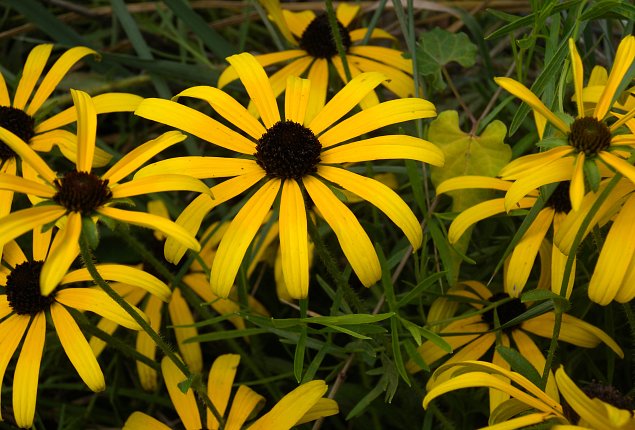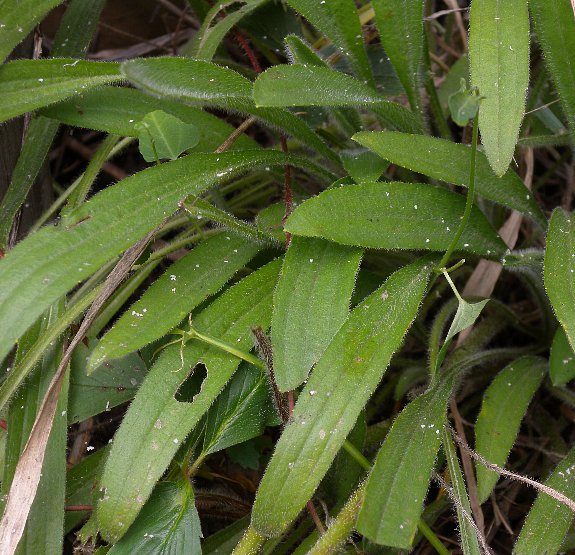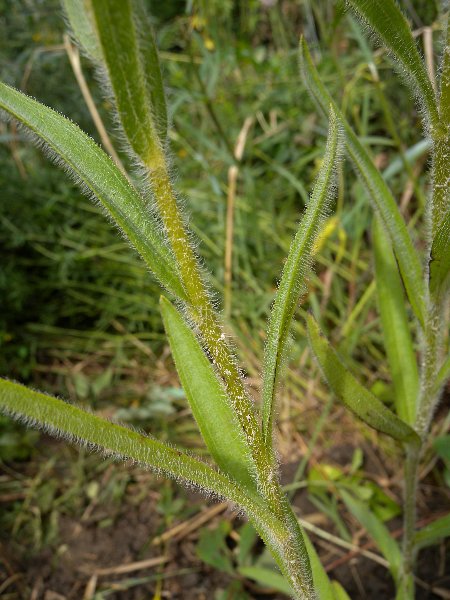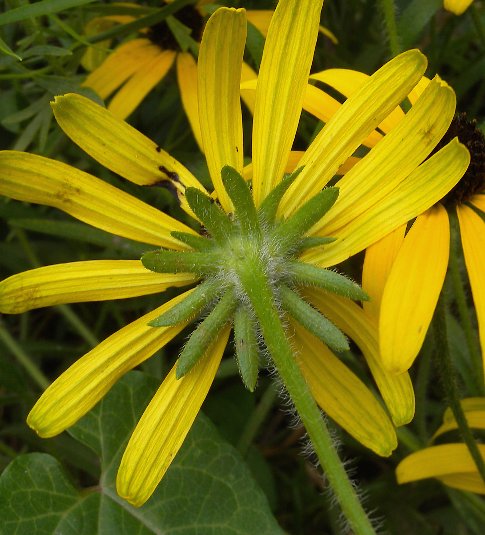Description: This perennial wildflower forms a small clump of basal leaves about 6-12" across, later developing leafy flowering stalks about 2' tall. The blades of the basal leaves are 2-5" long and about 3/8" (9 mm.) across, tapering gradually into slender petioles about 1-3" long (3-8" total length). The blades of the alternate leaves are 2-4" long and about 3/8" (9 mm.) across; they are sessile or clasp the flowering stalks slightly. Both basal and alternate leaves are medium green and hairy on both their lower and upper sides; they are linear-oblong or linear-oblanceolate and usually smooth along their margins. Sometimes a few widely spaced and shallow teeth are visible along the leaf margins. The flowering stalks are light green or pale brownish green, terete, and unbranched; they are covered with abundant spreading hairs. Alternate leaves with ascending blades are restricted to the lower one-half of each stalk, while the upper half of the stalk is naked.

Each stalk terminates in a single flowerhead about 2–2½" across. Numerous disk florets are concentrated in the center of the flowerhead; they are dark brown or black. The ray florets are located along the margins of the flowerhead, forming 8-13 petal-like yellow rays. The disk florets are fertile, while the ray florets are sterile. The base of each flowerhead is defined by an overlapping series of floral bracts (phyllaries) that are green, hairy, and lanceolate-oblong in shape. The blooming period occurs from mid-summer to early fall and lasts 1-2 months. At maturity, the disk florets are replaced by oblongoid achenes about 2 mm. long. At its apex, each achene has a crown of tiny scales. The root system is fibrous. This wildflower reproduces by reseeding itself.

Cultivation:
The preference is full sun, dry-mesic conditions, and a thin rocky soil
that is calcareous (typically containing limestone or dolomite).
Because this is one of the less aggressive coneflowers, taller and more
aggressive plants should be kept away from it.
Range & Habitat:
The native Missouri Coneflower has been found in only a few counties in
southern
Illinois (see Distribution
Map); it is considered rare and state-listed as 'endangered.'
This wildflower is found primarily in hilly areas of Arkansas and
Missouri; in neighboring states, it is rare. Habitats consist of hill
prairies, limestone and dolomite glades, and barren scrubby savannas in
upland areas. This wildflower is found in high quality natural areas.
While it is less popular than some other Rudbeckia spp. (Black-Eyed
Coneflowers), it is also cultivated in gardens.

Faunal Associations: The nectar and pollen of the flowerheads attract a wide variety of insects, including long-tongued bees, short-tongued bees, wasps, flies, beetles, butterflies, and skippers. Two species of bee are specialist pollinators (oligoleges) of this and other Rudbeckia spp. (Black-Eyed Coneflowers): Andrena rudbeckiae and Heterosarus rudbeckiae. Miscellaneous insects feed on the foliage and other parts of these species: this includes larvae of a butterly, Chlosyne nycteis (Silvery Checkerspot), larvae of several moths, the leaf beetles Microrhopala excavata and Paria thoracica, aphids, larvae of leaf-miner flies, larvae of gall flies, and other insects (see the Insect Table for a listing of these species).

Photographic
Location:
The wildflower garden of the webmaster in Urbana, Illinois.
Comments:
This perennial coneflower looks like a Black-Eyed Susan (Rudbeckia
hirta) with skinny leaves (usually less than ½" across). It
is one of
the coneflowers with widely spreading rays that don't droop downward.
Like some other species in this genus, the petaloid rays along the
margins of the flowerheads appear to be solid yellow to the human eye,
but to bees and other flower-visiting insects they appear to be
bicolored instead. This is because the outer one-half of each ray
reflects ultraviolet light, while the inner one-half doesn't. Unlike
the human eye, the eyes of bees and many other insects can detect
ultraviolet light. Therefore, the flowerheads are actually more showy
than one would assume.